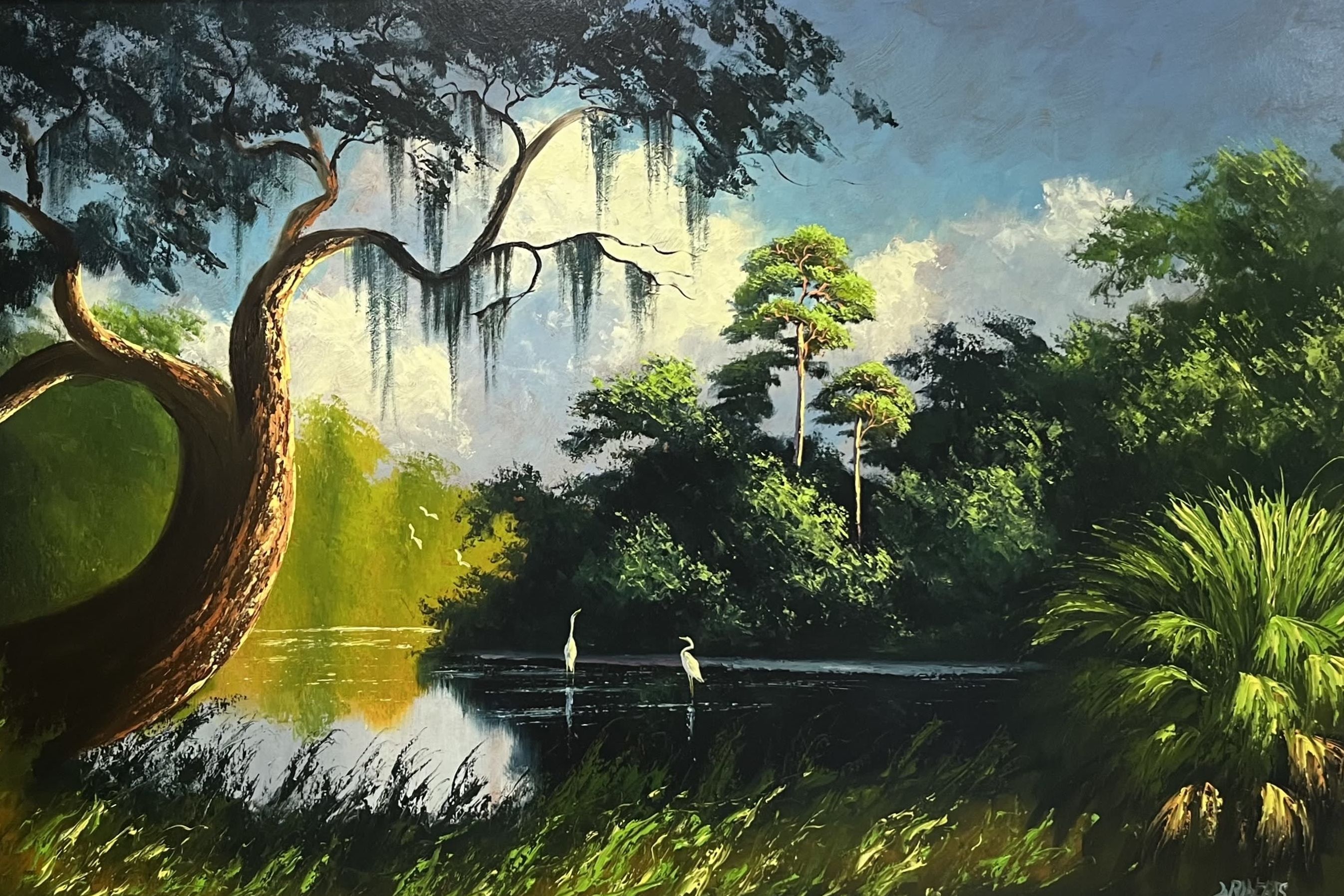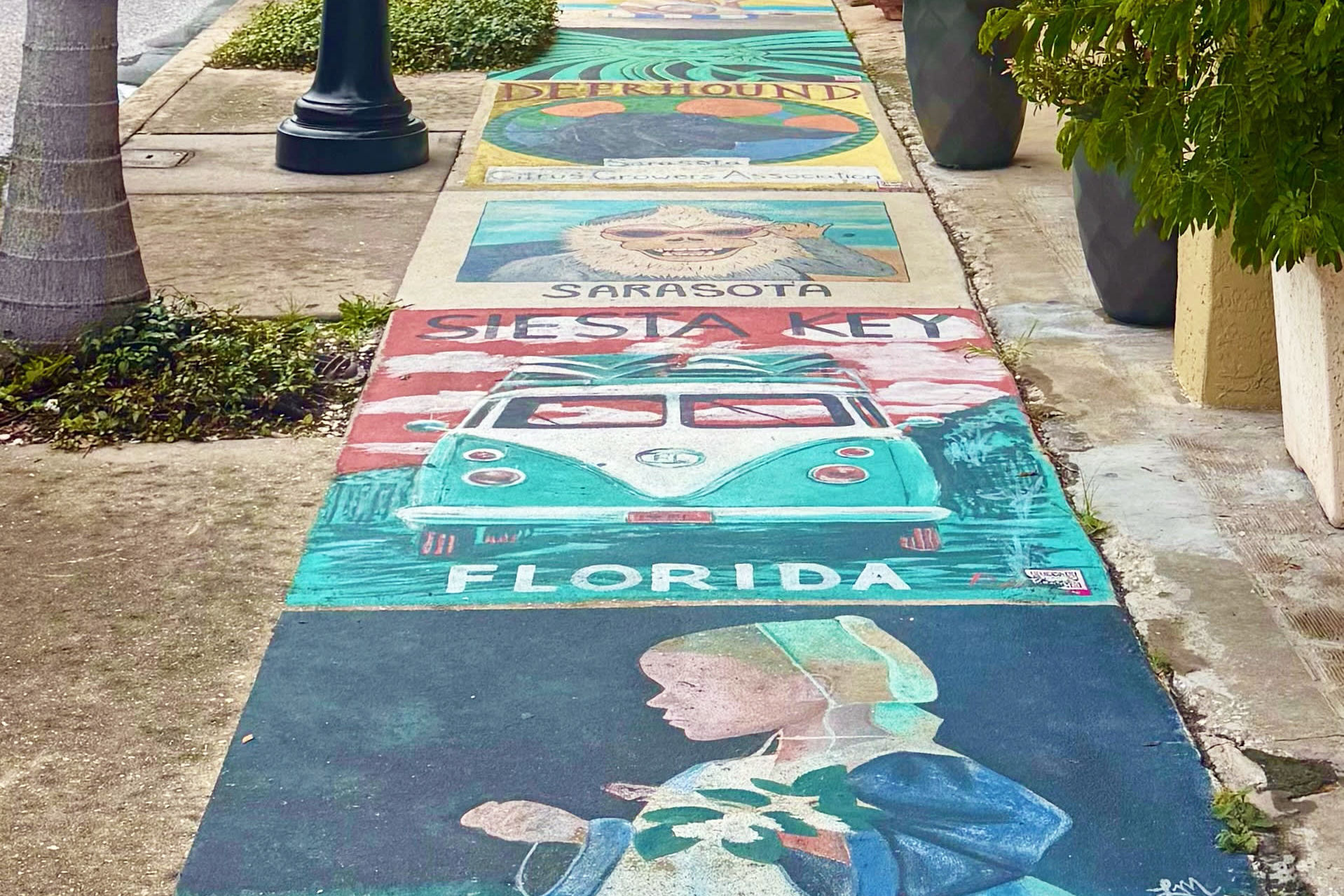Meet Ciera Coleman, the City of Sarasota's New Public Art Administrator

Image: Courtesy Photo
Sarasota’s deep-rooted connection to the arts is a cornerstone of its identity—and the City of Sarasota’s new public art administrator, Ciera Coleman, is well aware of that.
Coleman, who was previously the city's marketing and outreach coordinator and has been creative her entire life, is now leading the city's public art initiatives into a colorful future. She replaces Mary Davis Wallace—“a great mentor,” Coleman says—who led the development of the city’s 2030 Public Art Plan, which outlines the goals for the public art department through the next five years and includes recommendations for maintaining and expanding its collection. Wallace stepped down from her role as the city's senior planner and public art manager earlier this year.
Coleman, 38, began working for the City of Sarasota in 2021. In her former role, she contributed to projects such as city logo redesign efforts and parks and recreation marketing initiatives that aligned with city branding goals. She also worked on the 2030 Public Art Plan with Wallace.
We sat down with Coleman to discuss her plans for the future of Sarasota’s public art offerings, her professional trajectory and the City of Sarasota's artistic heritage. This interview has been edited and condensed for length and clarity.
What does it mean to you to take on this position?
"It’s an honor. Public art has always been integral to Sarasota, not just for its cultural vibrancy, but as a driver of creative and regional economies. One of my main goals is to steward the city’s 2030 Public Art Plan and bring it to life. I was fortunate to work on its design and development alongside my predecessor, Mary Davis, for nearly a year. It’s robust, forward-thinking and perfectly suited for an arts-centric city like ours."
Tell us more about the 2030 Public Art Plan and how it will shape the city’s future.
"The 2030 plan is a roadmap for integrating public art across Sarasota. It’s the result of extensive public engagement and represents a vision that extends beyond sculptures in roundabouts. The plan emphasizes accessibility, community involvement, and integrating art into capital improvement projects and neighborhoods. You won't see a piece go up without community buy-in. The arts bring and keep people here. I'm from here and decided to stay here because [Sarasota] is not just about the beaches or nature. It's about the arts and the local connection to them. It’s exciting to now oversee the plan's implementation and see it spark creativity and dialogue."
"Another exciting part of the plan is the city's art exhibits. For example, we've featured the Sarasota School of Architecture and the Florida Highwaymen in exhibits at City Hall."

Image: Courtesy Photo
What led you to a career in the arts?
"Fun fact: I was born in 1986, the same year the public art fund was created!
"Art has always been part of my life. My grandmother, Lois Miller, was a commercial artist in Sarasota and taught painting at the Hilton Leech House and Amagansett Art School. She created whimsical self-portraits dressed as clowns like Emmett Kelly, inspiring kids through her work. My mom, Lois Galbraith, was a sculptor who co-created the fish sculpture by Art Center Sarasota and exhibited widely. My grandmother was Mr. Zip in the King Neptune's Frolic parade in Sarasota in the '60s and '70s. Growing up, I was surrounded by art fairs, festivals, and creative energy."
"Naturally, I thought, 'I'm not doing art,' so I played music in high school. That led to learning to use Photoshop to make flyers and screen printing to make shirts. I went to the University of Florida for community health education and did an internship with the Source Teen Theatre at Planned Parenthood. In college, I worked at the arts and crafts center, and when we had a speaker come, the center would host a corresponding art exhibit that I would hang. Twice a year, we'd do a call to artists and I'd have to rank them and create a season schedule.
"When I moved back here, I did marketing for Healthy Start and work for Mommy magazine. Then, in 2020, I moved on to manage the downtown farmers market. So while I initially explored other paths, I always found my way back to the arts."
What are your priorities for the city’s public art program in your first year?
"I’m excited to focus on art and play. Public art can enhance public health by creating spaces that foster creativity, dialogue and a sense of community. I also want to bring attention to maintaining our current collection—many pieces need restoration or greater public awareness. For instance, there’s a new mural in progress near the Williams Parker building and a Highwaymen tribute mural going up at Whole Foods [in downtown Sarasota]. And the city is breaking ground on its first Florida Department of Transportation-managed roundabout sculpture, which is scheduled to be completed in early 2025."
How do you navigate differing opinions or controversies around public art?
"That’s part of art—sparking discourse and even controversy. My experience managing public feedback through social media has taught me that people often just want to feel heard. Building consensus and creating opportunities for engagement are key. While not everyone will like every piece, art’s ability to evoke emotion and foster conversation is what makes it so vital."
What excites you most about Sarasota’s artistic future?
"Sarasota’s essence is inseparable from its art. From its history to its present, art has shaped the city. Public art gives us a unique opportunity to reflect our diversity and shared heritage.
"I’m also thrilled about expanding engagement opportunities—whether through murals that celebrate local history, artist residencies or installations that create pride in our community’s story. This role isn’t just about managing projects. It’s about envisioning a vibrant future that reflects Sarasota’s creative spirit."

Image: Courtesy Photo
Do you have a favorite piece of public art in the city?
"Bravo! by Jorge Blanco holds a special place for me. It’s playful, inspiring, and brings joy to anyone who sees it. Pieces like that remind us why public art is so important. It enriches daily life and connects us to something bigger."
To learn more about the City of Sarasota's public art program, click here.



